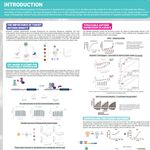Post-Doctoral Research Associate University of California San Diego
BIOGRAPHY

JUN 16, 2021 11:00 AM PDT
Implementation of a High-Throughput Wastewater SARS-CoV-2 Detection Method: Providing Actionable Data to your County or Campus
Sponsored by: Ceres Nanosciences
Speaker
Event Date & Time
Date: June 16, 2021
Time: 11:00am (PDT), 2:00pm (EDT)
Abstract
Large-scale wastewater surveillance can be used to help communities monitor infection dynamics for SARS-CoV-2. Wide-spread implementation of wastewater surveillance has been stymied by lack of a robust, high-throughput viral concentration method. In this webinar, researchers from University of California San Diego will discuss an automated method using affinity-capture magnetic hydrogel particles, followed by RNA extraction, RT-qPCR and sequencing. All steps from concentration to RT-qPCR plating are performed hands-free and conducted by liquid-handling robots, enabling the processing of 96 raw sewage samples in just 4.5 hours (concentration to RT-qPCR detection/quantification), effectively reducing the processing time by at least 20-fold. The high-throughput method has higher recovery efficiencies than conventionally used methods for viral wastewater concentration and can enable the processing of over 100 wastewater samples in a day. Using the high-throughput pipeline, samples from the influent stream of the primary wastewater treatment plant of San Diego County (serving 2.3 million residents) were processed for a period of 13 weeks. Wastewater estimates of severe acute respiratory syndrome coronavirus 2 (SARS-CoV-2) viral genome copies in raw untreated wastewater correlated strongly with clinically reported cases by the county, and when used alongside past reported case numbers and temporal information in an autoregressive integrated moving average model, enabled prediction of new reported cases up to 3 weeks in advance. On campus, the high-throughput method has been used to process over 9,500 samples from 121 samplers covering 350 buildings. The sensitivity of the high-throughput protocol was shown to detect 1 asymptomatic individual in a building of 415 residents. To date, nearly 85% of the individual cases on the UCSD campus have been preceded by positive wastewater samples. Extracted RNA samples from this high-throughput method can be used for genome sequencing, which will prove invaluable as there is a growing need to keep track of emerging variants.
Learning Objectives
- Discover how to use wastewater surveillance to monitor infectious dynamics in your building, town or county.
- Discuss the different methods used for concentrating SARS-CoV-2 prior to RNA extraction from wastewater with their characteristics and performances
- Explain how to effectively reduce turnaround time for high throughput detection of SARS-CoV-2 in wastewater surveillance workflows.
Webinars will be available for unlimited on-demand viewing after live event.
LabRoots is approved as a provider of continuing education programs in the clinical laboratory sciences by the ASCLS P.A.C.E. ® Program. By attending this webinar, you can earn 1 Continuing Education credit once you have viewed the webinar in its entirety.
You May Also Like
DEC 10, 2024 | 9:00 AM
To-date, proteomic analysis has been severely limited in scale and resolution. Analyzing protein samples using an intact, single-molecule approach holds th...
APR 21, 2025 | 1:00 PM
C.E. CREDITS
Routine coagulation assays are widely performed in laboratories and provide valuable information to the patient’s overall clinical picture. It’s important for laboratorians to kn...
Speaker:
Malissa S Norfolk, MBA, PMP, MLS(ASCP)ᶜᵐSHᶜᵐ
FEB 25, 2025 | 1:00 PM
C.E. CREDITS
Quality efforts in the clinical laboratory are always under the microscope- a hyper-focus for laboratorians from start to finish. Recognizing the external factors that affect hemostasis test...
Speaker:
Rae Kerlin, BS, MLS (ASCP), NCA
APR 02, 2025 | 11:00 AM
Join this year's poster presenters in the Poster Hall during the Poster Networking Hour, Wednesday, September 20th, from 10:00 AM –11:00 AM PDT , to chat live about their posters a...
Loading Comments...
Please update your information
Certificate of Attendance
Thank you for choosing Labroots. Please note that a Certificate of Attendance does NOT count towards Continuing Education Credits.
DOWNLOAD CERTIFICATE
DOWNLOAD CERTIFICATE
You must watch the entire webinar to receive your certificate of attendance.
You must attend the event before receiving your certificate of attendance.
You must register for the event first.
Certificate is no longer available for this event.
You must be logged in to retrieve your certificate.




